Chingarrup Sanctuary brings life to the land
In 2002, Eddy and Donna Wajon purchased two properties ‒ the first private properties specifically purchased for conservation as part of the Gondwana Link program. One of these, which they named ‘Chingarrup Sanctuary’, is 572 hectares of natural bush, bush regrowth and cleared land (now mostly revegetated) near Boxwood Hill, north-east of Albany. Eddy and Donna have showered it with love, presenting it to the world as a ‘field studies centre’ and attracting, so far, over a thousand scientists, naturalists and nature-lovers to see and study its natural wonders. Valued for its high plant diversity, revegetation and returning wildlife, Chingarrup Sanctuary consolidates an important north-south habitat link down to the Pallinup River and coastal vegetation. Meet Eddy and Donna Wajon and their Chingarrup Sanctuary.
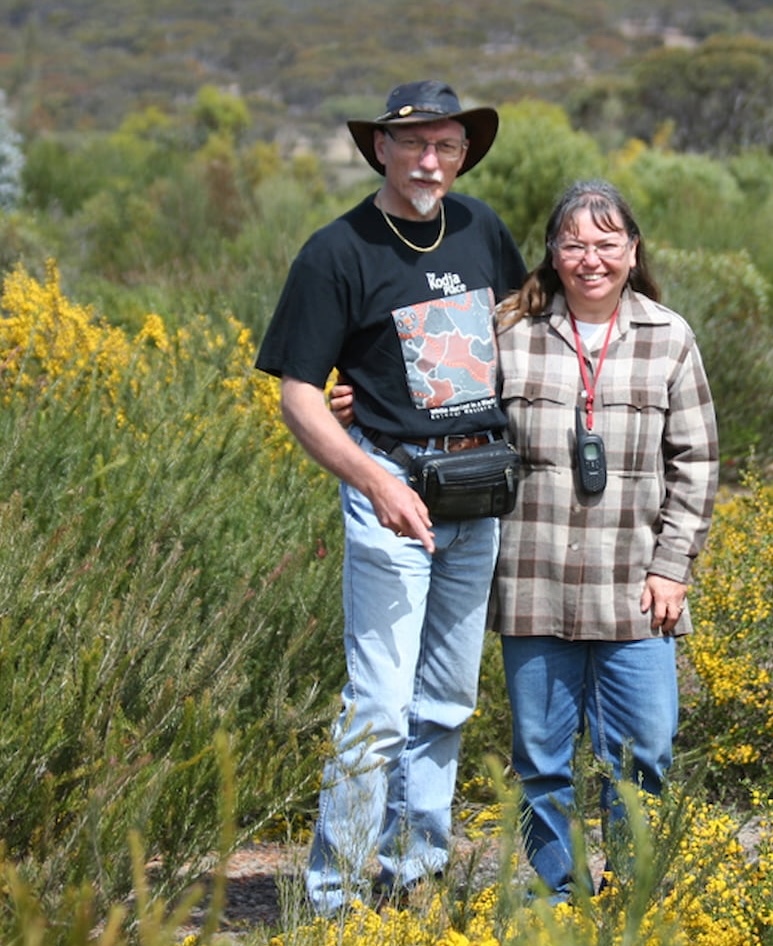
DONNA: We belong to the WA Native Orchid Society and the Wildflower Society of WA and we go on many field trips with them. We happened to be at a property near Bunbury where the owner had 40 hectares of bushland, and we thought, gee, this bush is nice, secluded, we could do something like this ourselves. That was on a Saturday and on the Sunday we bought a paper and started looking at properties for sale – that quick!
EDDY: We were very interested in properties that were threatened, that were biologically diverse, but could be cleared at any time. We wanted rare species, both of flora and fauna. Another important factor was whether the land was connected to other bush so that it had a linkage, it was part of a corridor.
At that time we had heard about Gondwana Link, and I thought it was a pipe dream. I thought it was bloody stupid, it could never happen ‒ how could you have a 1000 km patch of bush from Margaret River to Kalgoorlie? But it was a very ambitious and worthwhile target. And then we got in contact with Keith Bradby at Gondwana Link asking for the criteria they used to buy their land, and then we drafted up our own. In the end we couldn’t decide between two properties and so we bought both of them.
DONNA: This property, Chingarrup Sanctuary, was shown to us by Keith and he walked and walked us all over the place. And that sold us ‒ it was such a magnificent, biodiverse property with lots of different soil types. So it was one of the two, and Ed fell in love with it because of that diversity. But the one that I fell in love with was a smaller property near Tenterden that had 55 different orchids on it – so I’m the orchid person and he’s the wildflower person and Chingarrup Sanctuary is his and Mondurup View is mine.
When Eddy and Donna bought Chingarrup there were about 470 hectares of intact bush and regrowth and 100 hectares of cleared farmland. In 2004, working with Greening Australia, Eddy and Donna started direct seeding habitat on most of the cleared land, and they’re now seeing wildlife coming back to these revegetated areas.
EDDY: Landscape does not regenerate itself very easily unless the propagules are there. And when it has been farmed, even for a year or two, they’re often lost, so you’ve got to physically intervene. And we’ve intervened, and that’s what we feel so good about ‒ we’ve been part of the process of restoration and revitalisation of the land.
We’ve had some spectacular successes ‒ we may have been the first in Gondwana Link to have Malleefowl build their mounds in revegetation. We’ve created a home for them. We have helped look after the next generation and the continuation of life of the natural inhabitants of this place.
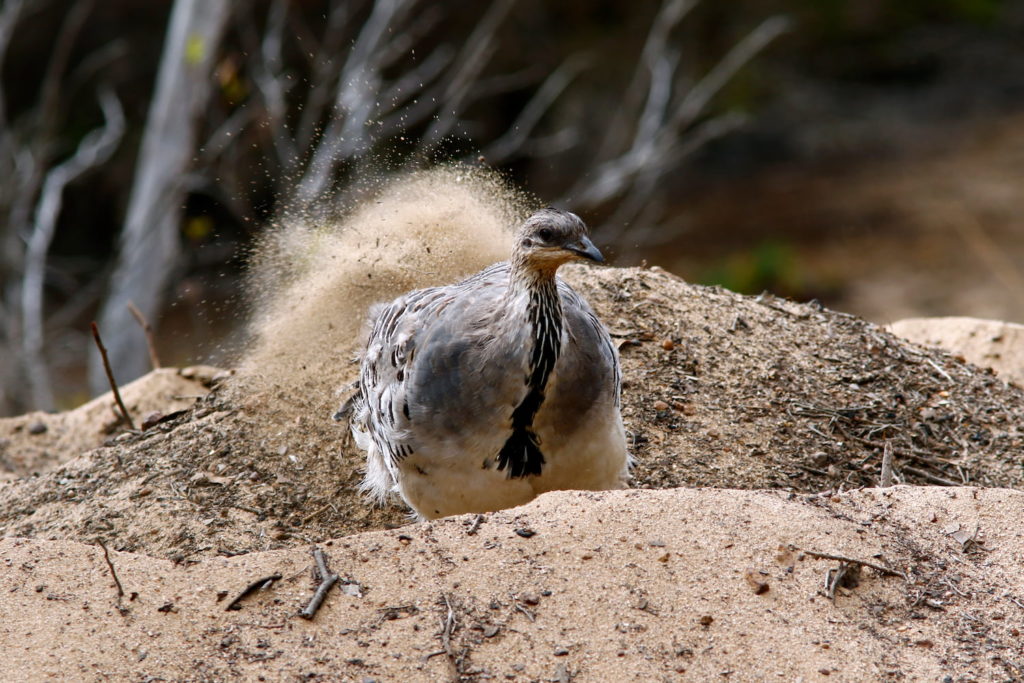
DONNA: A Malleefowl likes the alley between the rows of revegetation because it has room for its nesting mound and it has all the leaf litter it can bring in from the sides, so it’s perfect for the bird. Of course, we had to educate the one who chose the track, the car track, for its home!
EDDY: At one stage there were two Malleefowl mounds being worked at the same time about 100 meters apart in the revegetation, and across the property we have a total of 14 identified sites where there is or has been a mound. Currently we have three active and the biggest is about three metres wide and a metre and a half high. And I now have 75,000 photos from the motion sensor camera focused on that mound!
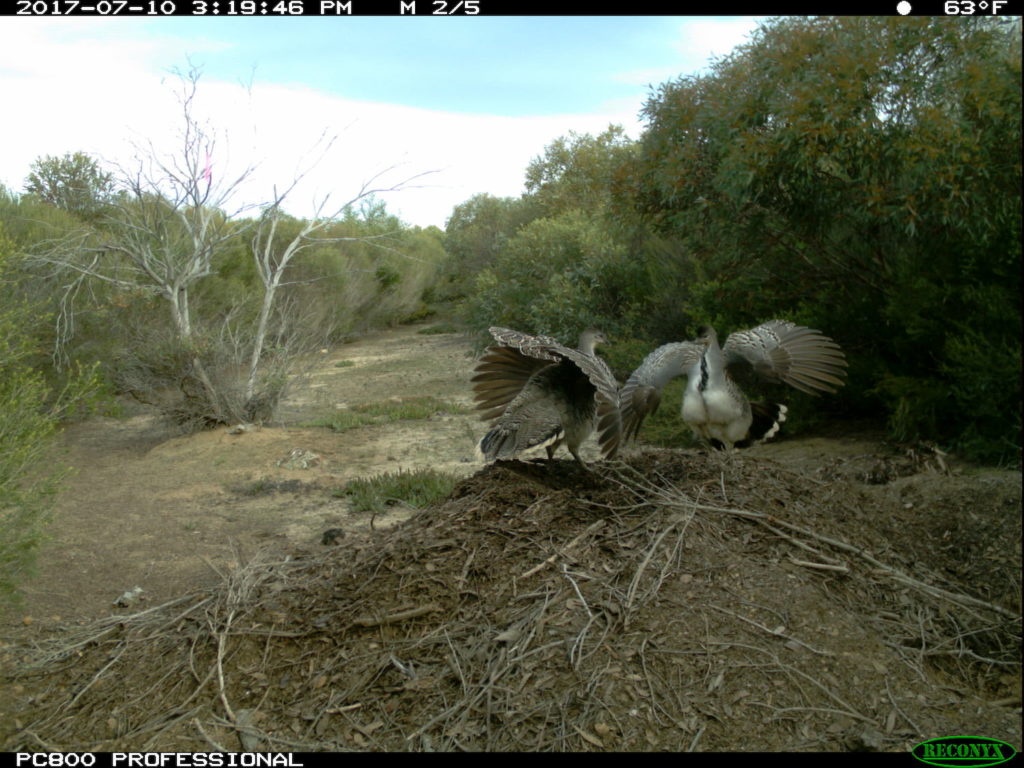
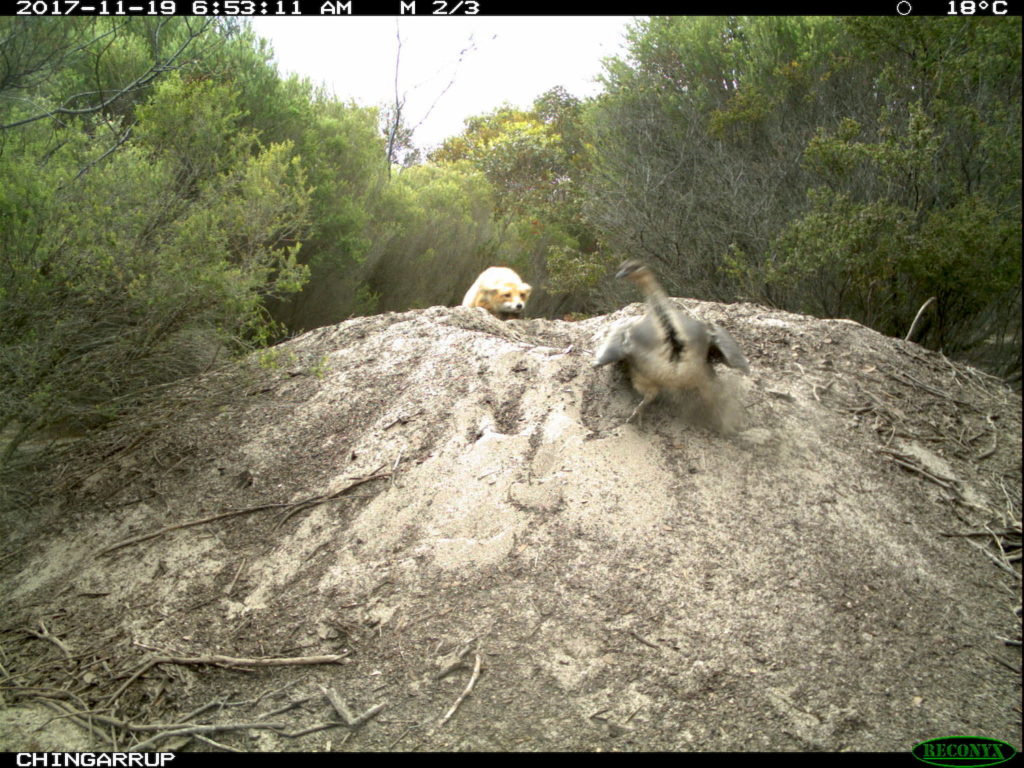
Over the last five years we have seen on those cameras so many different things about Malleefowl that perhaps not many people have previously witnessed. Last summer we had two very hot days of 42 and 45 degrees at Chingarrup. On those two days the Malleefowl were working the mound, so what we have photos of now is the Malleefowl falling over on the mound. They’re actually tipping over and laying on their wings or on their belly for up to five minutes. Maybe because they’re exhausted at 45 degrees because they do not stop working ‒ they work 10 hours a day.
In that camera monitoring we have also seen an egg laying event, and we’ve seen eggs in the mound which the birds have exposed during their digging. We have unfortunately got two sets of footage of a fox taking an egg in its mouth and walking away with it at night.
But we now have two spectacular sets of footage of two chicks hatching. And what’s so interesting, with one of these hatchings, is there’s two Malleefowl on the mound, digging a little bit, when a little chick emerges from the mound, hops underneath one of the Malleefowl and it FRIGHTENS all hell out of it – the parent has no idea what that is. Absolutely no idea. And then the chick runs away and the parent Malleefowl, two minutes later, comes back.
DONNA: We don’t need television ‒ we can watch our photos from the motion sensor cameras.
The broader renaissance of natural values has also been studied extensively as Chingarrup Sanctuary is the site of long-term monitoring, based on impressive citizen science.
DONNA: We offer our property to a number of different scientists including from Bush Heritage Australia and the Conservation Council of WA. They have become our extended family because they love coming here and doing their work. And that shared knowledge and talk and their appreciation of the land makes us feel so proud.
And so we’ve had bird mist-netting and pit fall trapping to collect animals for identification and restoration monitoring; we’ve had moth light-trapping by an entomologist; and we’ve undertaken fox and cat baiting. We’ve done flora and bird surveys with Bush Heritage and a botanist friend, and a Chingarrup Creek aquatic survey with Geraldine and Steve Janicke.
EDDY: What’sso important, particularly to me, is sharing this place with people. So we’ve probably had a thousand visitors come to this place so far. People just come and experience nature and what you can do with nature ‒ what we have done on this property. So here they can participate with Dr Nic Dunlop from the WA Conservation Council in the bird banding. Even if they are not doing bird banding themselves, they can actually see a bird in the hand, and in fact hold a bird in their hand prior to release. Or they can help us with the pit-trapping and hold a lizard in their hand. Or a honey possum ‒ we catch honey possums all the time in our pit traps.
All of this scientific investigation is helping to uncover an incredibly rich diversity of plants and wildlife on this property.
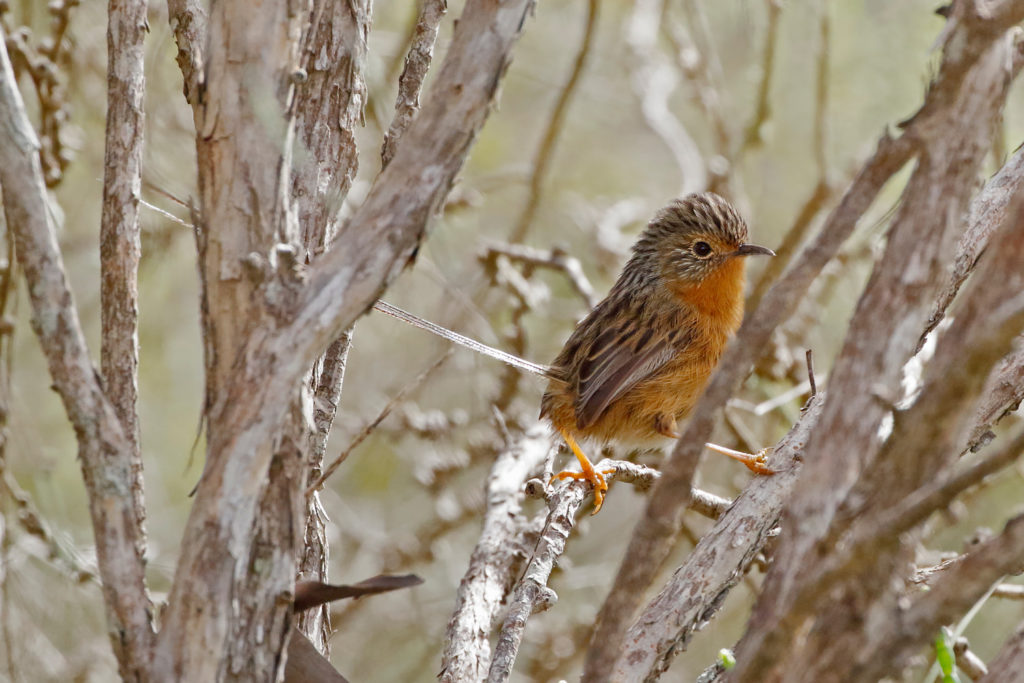
EDDY: It’s the sense of discovery. Each time you take a step, there is something new to be seen in front of you that is unpredictable. And that sense of magic and wonder is what I get out of the bush as well as just photographing it.
We have 780 fauna species on the property of which there are 13 mammals, including bats, 123 birds, 31 reptiles, including eight snakes, and 250 moth species. In the local creeks, one native fish and a whole range of other aquatic creatures were found by the Janicke’s during a drift netting survey.
We have identified 575 plant species on the property so far. What we haven’t photographed is many of the grasses and sedges, and very many of the small things, and so there is probably going to be at least another 50 species of plants on the property.
This is part of such a biodiversity hotspot. I mean you just have to go 5 km away and 25% of the plants are different, and then another 5 km away and another 25% are different, and so you’ve got already a 50% different suite of plants.
For many years, Eddy and Donna have advocated for environmental protection on many fronts, including the conservation of roadside vegetation, but through their profound connection and commitment to Chingarrup Sanctuary they feel the power of tangible achievement.
EDDY: I write lots of submissions on proposals that involve clearing, but those sort of things are outside of my direct control. I might ask someone to do something to save native vegetation but often nothing happens. Whereas owning a property, it’s under MY control. I can decide what to do. I can undertake the things that I would like other people to do on other properties. This is OUR national park – we manage this, we protect it for perpetuity. If other people don’t want to do it on other properties or government land, at least we’re showing how to do it. We are doing it. I’m living what I preach. And when I get frustrated with not getting action on my lobbying, I can feel that we are doing something here and we’re contributing.
So this is an attempt from us to hold the bulwark against the loss of our fantastic biodiversity at least at our property and to set an example for other people that in fact it can be done. You CAN do something, but you have to want to do it, and it isn’t difficult. I mean we’re just ordinary people, we’re not multi-millionaires.
Sincere thanks to Donna and Eddy Wajon and the photographers, and to Frank Rijavec for interview material.
